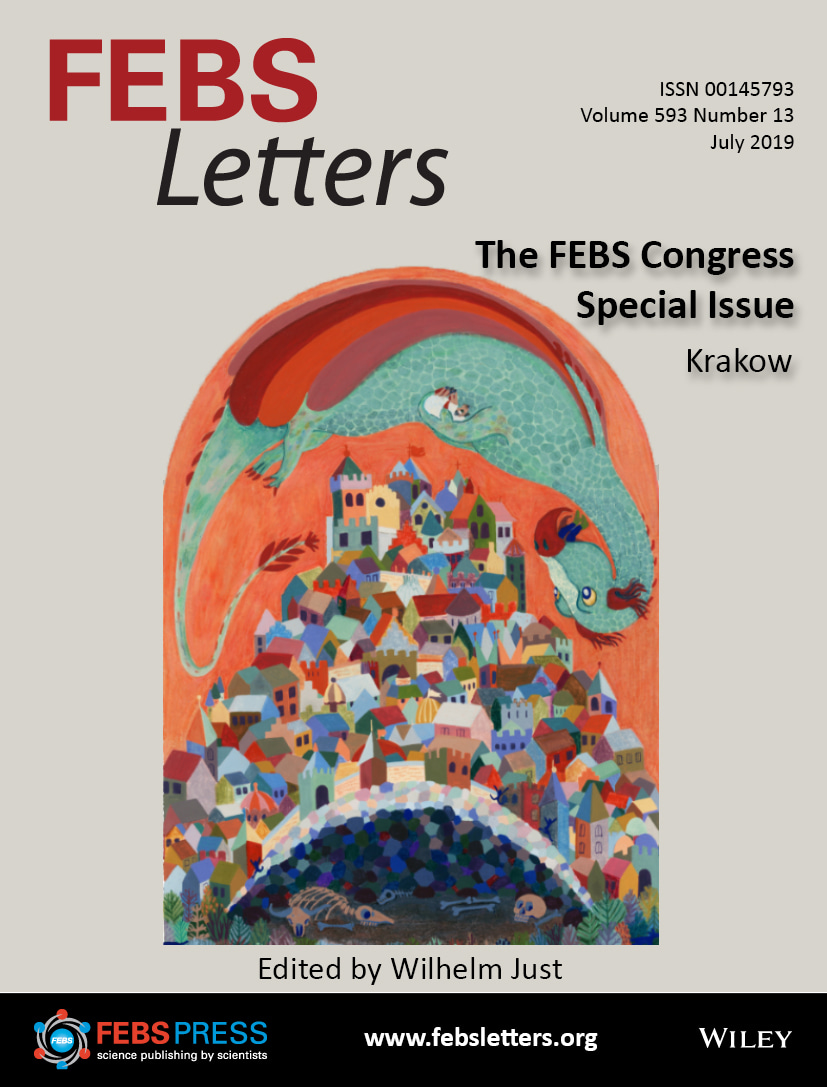

The 44th FEBS Congress is taking place this year from July 6-11 in Krakow, Poland. Traditionally, FEBS Congresses are organized by FEBS and local constituent societies with the ambition to promote interdisciplinary and focused exchanges alike. FEBS Letters organizes a yearly Special Issue featuring contributions by FEBS Congress invited speakers to crystallize the broad spectrum of discussions triggered at this paneuropean event among molecular life scientists. In this year’s Special Issue, you may find a variety of freely-available Review articles, focusing on topics as diverse as human evolution, mitochondrial biochemistry, plant biology and translational research.
View The FEBS Congress Special Issue
Editorial
The FEBS Congress is always marked by seemingly opposing flavors. The programme is unusually multidisciplinary, as compared to those of other conferences; yet heated and specialized discussions always arise during the symposia and poster sessions. Moreover, every year, the FEBS Congress achieves just the right balance between an international character and a strong footprint of the local scientific society.
This year’s host city – Krakow – is just as diverse as the concept of the FEBS Congress. It is, thus, with excitement that the FEBS Letters Editorial Team welcomes you to the 2019 FEBS Congress in Krakow, Poland, with this Special Issue. Just as the legend of the Wawel Dragon sparks the imagination of visitors to Krakow, we hope that this Special Issue can inspire insights leading to breakthrough advances in future research.
While looking forward to engaging with FEBS Congress participants in discussions about their work, the future of molecular biosciences and publishing, as well as about the new face of our journal, we have worked hard over the past year to set the scene: we invited FEBS Congress Speakers to disseminate the latest advances in their fields through the publication of a Review article. Again, no constraints here on article topics or length: our criteria were originality and scientific quality.
We are, thus, delighted to present you with the successful outcome: 17 Review articles and 2 Research articles on topics as diverse as plant biology, evolutionary biology, chromatin, translation, the cytoskeleton, mitochondria and translational research.
In detail, Markus Geisler and Martin di Donato (University of Fribourg, Switzerland) provide a new perspective of HSP90 and its co-chaperones, as central players in plant hormone biology . Chris Tyler-Smith (The Welcome Sanger Institute, UK) and colleagues discuss the contribution of genomic analyses to our understanding of classic selective sweeps . Moreover, Hiroyuki Araki (National Institute of Genetics, Japan) and Kohji Hisume review replication fork pausing at chromosomal protein barriers .
Are you interested in translation? Then you will enjoy reading the Perspective article by Marina Rodnina (MPI Göttingen, Germany) and colleagues, which focuses on -1 programmed ribosome frameshifting on viral and bacterial mRNAs . Furthermore, Sebastian Leidel (University of Bern, Switzerland) and Namit Ranjan provide a brief overview of mRNA and tRNA modifications, and their roles in the regulation of translation .
Not to be missed, are the Review articles by Folma Buss (Cambridge Institute for Medical Research, UK) on the Myosin 6 interactome , as well as by Silke Claus (Gent University, Belgium) et al. on protein-mediated lipid transport through the plasma membrane in yeasts .
For those sharing an interest in mitochondrial biology, Shey-Shing Sheu (Philadelphia University, USA) and colleagues have written on the current state of the art of available methods for calcium measurements in live cells . Moreover, Paolo Bernardi (University of Padova, Italy) discusses updates on the contradictory hypothesis that F-ATP synthase contributes to the Permeability Transition Pore , whereas Joao Passos (Mayo Clinic, USA) and colleagues review the current literature connecting mitochondrial dysfunction to cellular senescence . Finally, Andrei Chabes (Umea University, Sweden) and Paulina H. Wanrooij discuss the incorporation of ribonucleodides into mitochondrial DNA .
On the translational side of things, we have a nice collection of Review articles on mental disorders (Marta Wisniewska, Warsaw, Poland) , hypertrophic cardiomyopathy (Christoph Maack, Würzburg, Germany) , drug targets in Parkinson’s Disease (Judit Ovadi, Budapest, Hungary) , and biomarker development in diabetes (Gordan Lauc, Zagreb, Croatia) . Remarkably, Connie Jimenez (VU University, The Netherlands) and colleagues have contributed an interesting Perspective on the potential of urinary exosome proteomics in cancer biomarker development . Finally, Peter Seeberger (MPI Berlin, Germany) and coauthors discuss MAIT cells (an innate-like subset of T cells) as vaccine targets .
We invite you to scroll through our table of contents with the assurance that you will find at least one article to trigger your specific research interest. We thank all contributors for crystallizing their valuable insights in this issue, which, although not encompassing all 41 symposia topics and speakers, gives a nice taste of the 2019 FEBS Congress. Last but not least, many thanks to the Polish Biochemical Society, who organized this year’s FEBS Congress led by Andrzej Lgocki, Adam Szewczyk and Piotr Laidler; without their efforts and collaboration, this Special Issue would never have materialized.
Felix Wieland, Managing Editor, and the FEBS Letters Editorial Team
View The FEBS Congress Special Issue





Join the FEBS Network today
Joining the FEBS Network’s molecular life sciences community enables you to access special content on the site, present your profile, 'follow' contributors, 'comment' on and 'like' content, post your own content, and set up a tailored email digest for updates.